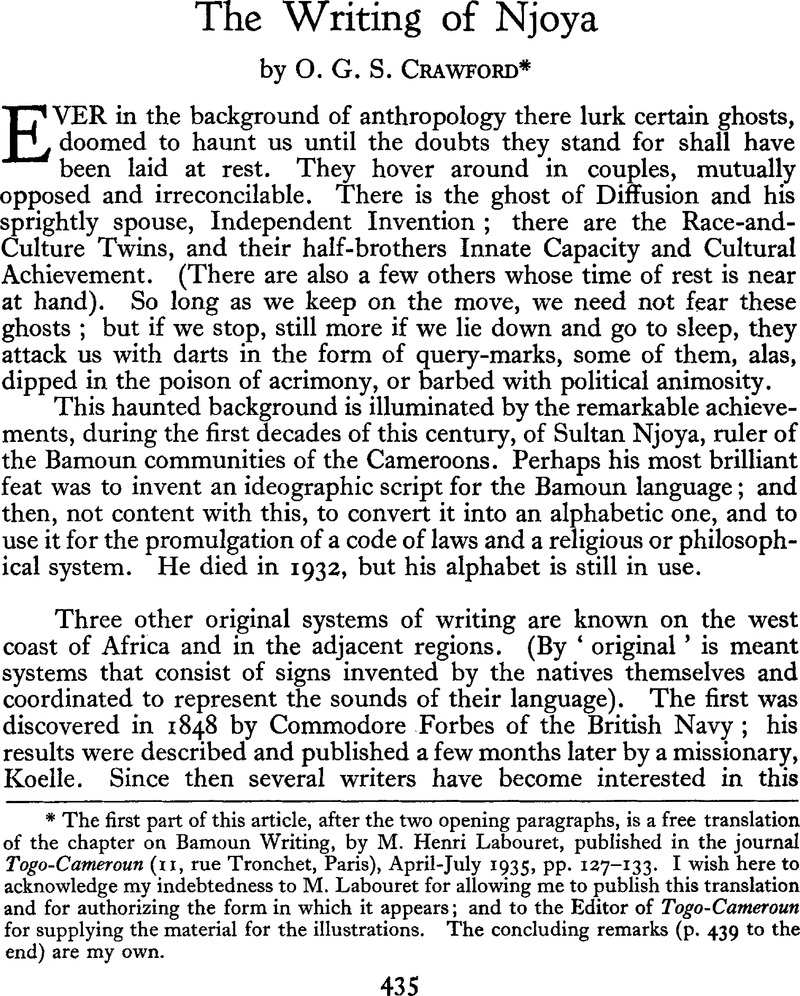Article contents
The Writing of Njoya
Published online by Cambridge University Press: 02 January 2015
Abstract

- Type
- Research-Article
- Information
- Copyright
- Copyright © Antiquity Publications Ltd 1935
References
1 ‘Der Koenig von Bamun und seine Schrift’. Der evangelisdie Heidenbote (Basel), vol. LXXX, no. 6.
2 Revue d’Ethnographie et des Traditions populaires, 1922, pp. 11–36.Google Scholar
3 See note at end.
4 An ideograph has been defined as ‘a drawing representing not a sound, nor even a word, but an idea’; the oldest known signs were not ideographs but pictographs.
5 The oldest alphabetic signs are those of Sinai and Syria, which belong to the middle of the second millennium B.C. or before.
6 I have always held this view, though I have never developed it. (See for instance my remarks in Ordnance Survey Professional Paper No. 6, ‘Long Barrows of the Cotswolds’, 1922, p. 5). I differ from orthodox diffusionists in my views about the country of origin and in the method of diffusion, as well as from many of their subsidiary theories.—O.G.S.C
- 2
- Cited by




